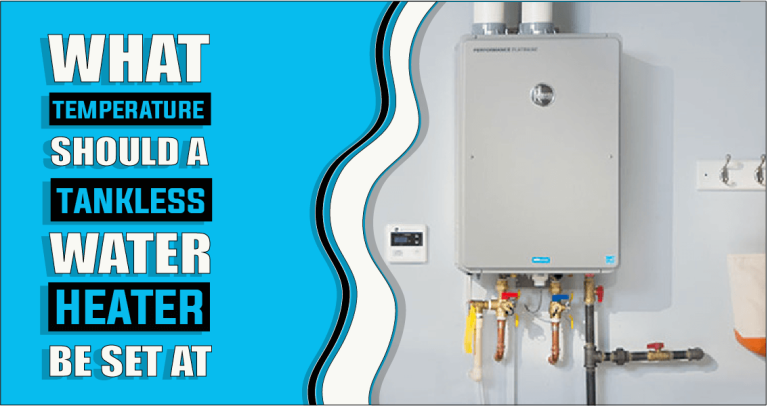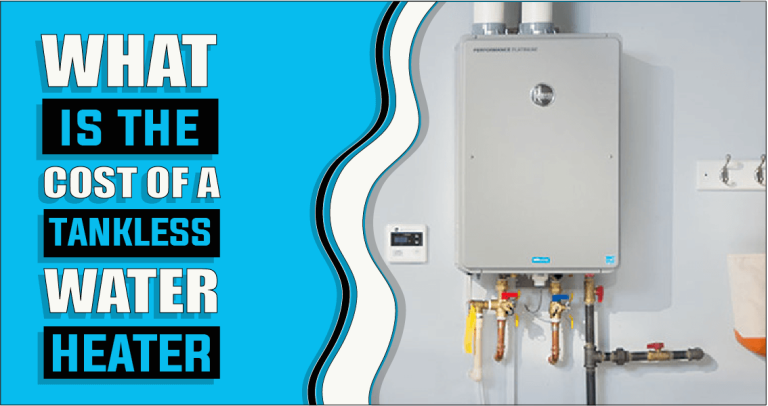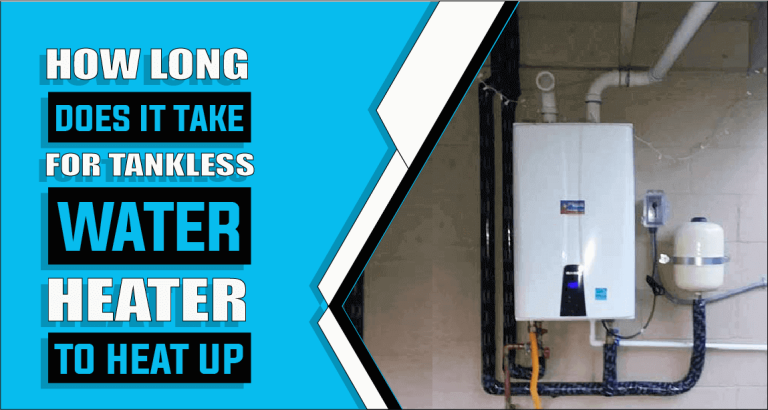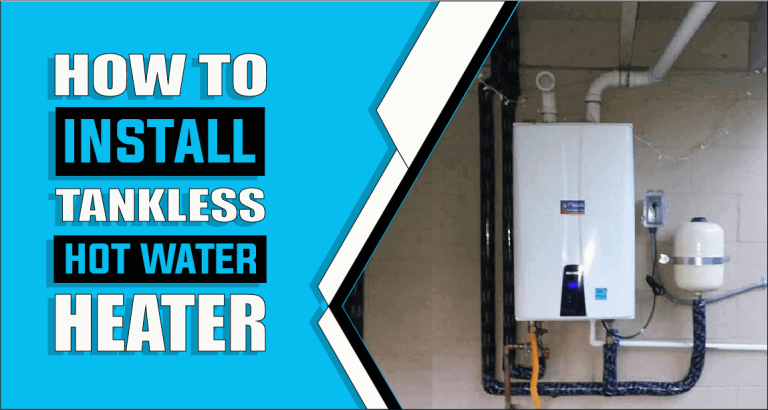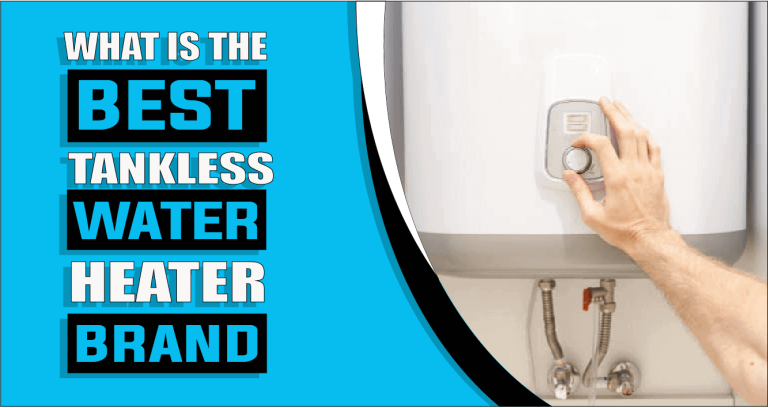Do Tankless Water Heaters Need To Be Vented – The Truth Reveals
Are you worried about installing a tankless water heater in your home? There’s nothing worse than buying a product and then finding out it doesn’t work for your space. If this is your worry, you may be asking yourself the essential question- do tankless water heaters need to be vented? Not only is it an important factor when choosing which type of heater is best for you, but understanding the process of properly venting one can help ensure successful installation. We understand as there’s quite a bit of conflicting information out there about venting tankless water heaters. Don’t worry though – we’ve got you covered! In this blog post, you’ll explore the full details of what steps are necessary for the proper venting of tankless water heaters and facts regarding the venting of tankless units. Stick around to learn all you need to know so that you can make the best decision about your energy-efficient hot water supply solution!
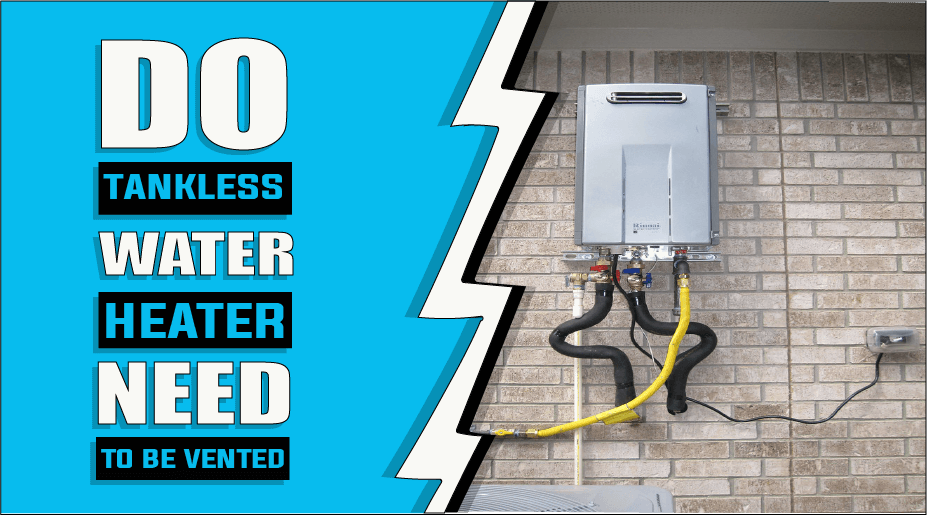
Let’s explore do tankless water heaters need to be vented.
Are you considering a tankless water heater to make your early-morning showers better and wondering whether it needs to be vented? Yes, tankless water heaters need to be vented properly to work safely and efficiently. Tankless water heaters are a great appliance to save energy and it also helps reduce your carbon footprint. However, they do need to be vented for them to operate properly. The venting system usually involves running a pipe from the tankless water heater directly outside of the home or building. This pipe will provide air for combustion so that the tankless water heater works correctly. Additionally, it also allows harmful gases, such as carbon monoxide, produced during combustion to escape from the home or building. Without this venting system, these gases would accumulate within the home and be dangerous for occupants.
Proper installation and maintenance of the venting are key for the safe operation of a tankless water heater. Without proper ventilation, an inadequate supply of air may cause back-drafting which can lead to poor performance and even failure of your unit over time. Regularly checking and cleaning any dust accumulation in your tankless unit and its vents should also be done as part of regular maintenance. Doing so will help ensure that your tankless water heater continues to operate safely!
Vent types of tankless water heaters
Tankless water heaters require a certain type of venting to ensure that they operate effectively and safely. The most common tankless water heater vents used today are either PVC or CPVC pipes, but other materials including metal may also be acceptable depending on local codes and manufacturer instructions. The tankless water heater venting process may require different types of vents, depending on the type of tankless heater you’ve chosen. Here are some common tankless water heater vent types:
- Power Vent
- Direct Vent
- Concentric Vent
1: Power Vent
A power vent is a type of vent specifically designed for tankless water heaters. It serves to exhaust hot air from inside the heater and to draw in fresh air from outside the home. This helps to ensure that the heater runs efficiently and safely. They feature PVC construction and multi-pronged blades, adjustable speeds, noise reduction technology, and filter options. Additionally, because these vents draw in air from outside the home, they can provide greater efficiency by providing cooler ambient temperatures for the water heater. Power vents are also easy to install and maintain, making them an ideal choice for homeowners.
2: Direct Vent
A direct vent tankless water heater draws air for combustion directly from outside the home and expels it back outdoors via an integrated system of pipes or ductwork. This type of tankless water heater typically has a more complex installation process but can provide improved efficiency and cost savings in the long run. The advantages of direct venting are numerous:
- It helps keep indoor air clean by preventing pollutants and odors from entering your home.
- It helps maintain efficiency since the hot exhaust gases are vented directly outside.
- It doesn’t require a large opening or metal flue.
- It can be used with any type of fuel, including gas, propane, diesel, or electric.
3: Concentric Vent
A concentric tankless water heater vent is a combination of an intake pipe and an exhaust pipe that is connected to the tankless water heater. This type of tankless water heater vent uses air from outside the home to fuel combustion, while simultaneously exhausting hot exhaust gases outdoors. The concentric tankless water heater vent is designed to help maximize efficiency, as the two pipes are connected in a single unit, reducing installation time and costs. Additionally, they can provide an extra layer of safety by helping to prevent exhaust gases from entering the home.
Facts regarding venting for tankless water heaters
The tankless water heater is a wise choice to make in chilly winters. But they need to be vented to operate properly and safely. However, in certain instances, false information regarding the venting requirements of tankless units may prevent people from endorsing them. So before purchasing the unit think about these tankless water heater venting facts.
1: Gas tankless water heaters don’t need indoor air for combustion
Gas tankless water heaters don’t have to rely on indoor air for combustion. Instead, these systems use the outside air and direct venting. Direct venting systems use an internal fan that pulls in outside air from the exterior of the home, while simultaneously expelling the exhaust gases outside through a double-walled pipe.
Some tankless water heater units come equipped with a power vent that uses only an exhaust vent for gas combustion. This requires more flexibility in terms of locations where the unit can be installed so there’s access to an external source of make-up air. Overall, gas tankless water heaters offer a convenient and efficient way to heat water without relying on indoor air for combustion.
2: Even with direct-vent models, tankless water heaters don’t necessarily require two ventilation pipes
Tankless water heaters don’t always need two ventilation pipes. Some manufacturers designed concentric vent heating units that use only a single pipe for exhaust and air intake. Single-pipe tankless units are perfect for tight spaces, as they require less space around the unit than double-piped models. Furthermore, concentric vents offer other benefits as well. First, single pipe units require to make only one in the wall or ceiling. Second, concentric vent pipes are cool to feel because they retain the warm exhaust air on the inside.
3: Venting Tankless Water Heater through the Roof is Not Necessary
Tankless water heaters can be vented on a side wall of your home since the exhaust from the units is blown horizontally by the combustion fan. In comparison, traditional tank heaters use galvanized steel B-vents to vent through the roof because they take advantage of natural draughts to induce the hot exhaust air to ascend and leave the building. Venting through the roof increases the installation cost and makes the installation even more challenging. However, venting through the wall gives you a lot more freedom in where you can put the unit.
4: Venting is Not Necessary for Outdoor Tankless Water Heaters
Outdoor tankless water heaters don’t require venting. These units can be installed outdoors due to their stainless steel construction and sealed combustion chamber. This means that all combustion exhaust is safely expelled away from the building envelope. Furthermore, no make-up air is required for outdoor tankless systems since they are already exposed to the open atmosphere outside. Additionally, switching from a tank water heater to an outside tankless device might save up floor space inside.
5: Condensing Tankless Water Heaters don’t Need Metal Venting
Condensing tankless water heaters transfer 95% of the generated heat to the water which results in a lower exhaust gas temperature of about 110 to 120 degrees Fahrenheit. The result is that they can be vented using a less expensive plastic, typically PVC or polypropylene. In contrast, noncondensing heaters release high-temperature exhaust gas and need to be vented with metal.
6: Mounting Tankless Water Heaters in a Box Against a Wall is Not Always Necessary
Some manufacturers provide recess boxes to keep the tankless water heater inside the wall. Tankless water heaters can be installed in a variety of locations other than just a box fastened to a wall. Noncondensing units, which are 14 inches wide, can fit between regular studs; condensing units, which are 18 inches wide, could require more inventive framing.
7: Multiple Water Heaters don’t usually Require Separate Vents
Do multiple water heaters require separate vents? It depends on the tankless water heater model and the number of tankless units being installed. Generally speaking, tankless water heaters can be vented together if they’re running on a single natural gas line or propane tank. Some manufacturers make special models that feature built-in connection points to hook up multiple tankless devices in parallel. However, tankless water heaters of different brands can’t be vented together, so you need to check the manufacturer’s instructions before making a purchase.
8: The Venting System Shouldn’t Look Ugly
The tankless venting system doesn’t have to look ugly or detract from the aesthetics of your home. You can choose from a variety of venting options to make tankless water heater installation look seamless and pleasant.Additionally, to conceal tankless water heater vents, it’s possible to use a decorative wall thimble that fits in between either side of the wall and goes around the vent pipe for a clean look.
How to Vent A Tankless Water Heater
Venting a tankless water heater is an important part of the installation process. Improperly vented heaters can be inefficient and can even pose a risk of carbon monoxide poisoning. Here are some important tips to ensure proper venting of your tankless water heater:
1: Beware of Local Codes for Venting
First, you need to be aware of any local codes or regulations that may apply to your installation. Different areas have different requirements, so it’s important to check with your local building authority before beginning the venting process.
2: Hand-pick Right Vent Pipes
Once this has been confirmed, you’ll need to make sure that your vent piping meets the manufacturer’s specifications for diameter, material type, and length. Generally speaking, plastic pipe is used for venting because it’s lightweight and easy to cut, but other materials such as metal may also be acceptable in certain cases.
3: Determine the Correct Location for Vent Terminal
Next, decide where you will install the vent terminal. This should be placed near the top of your house exterior and should extend above both the roofline and any nearby obstacles such as tree branches or utility wires. It’s important to keep the entire length of the pipe clear from any obstructions for it to function properly.
4: Fasten Connecting Joints Tightly
Finally, once all components have been assembled according to manufacturer instructions and local codes, secure each joint tightly with sealing tape or paste before connecting them with screws. This will help ensure that no air leaks occur during operation that could reduce efficiency or cause safety risks associated with carbon monoxide poisoning. After this step has been completed successfully, you’re ready to power up your tankless water heater!
In winding, properly venting a tankless water heater requires careful planning and attention to detail to ensure efficiency as well as safety from potential hazards such as carbon monoxide poisoning. By following the steps outlined above and consulting local authorities regarding any applicable codes or regulations, you can complete this task successfully so you can enjoy all the benefits of an efficiently running tankless water heater!
Can You Use the Existing Vent for the Tankless Water Heater?
In some situations, it is possible to use the existing vent for a tankless water heater, but it depends on certain factors. For example, the type of vent that is currently used such as a single or double wall must be compatible with the new heater to ensure proper installation and safety. Additionally, the size and length of the existing ductwork must be able to accommodate the increased airflow that is generated by a tankless water heater when running at full capacity.
In cases where these factors are not met, installing a new vent may be necessary to properly install a tankless water heater. Furthermore, if there are any obstructions blocking access to an existing vent for a tankless water heater, then this can also greatly affect whether or not it can be used. Lastly, each home’s setup is different, consulting with a qualified professional who can assess your specific situation before making any decisions is highly recommended.
Frequently Asked Questions
The best way to vent a tankless water heater is to make sure that all components meet the manufacturer’s specifications for diameter, material type, and length in addition to following any applicable local codes or regulations. Additionally, it’s important that the vent terminal is placed near the top of your house exterior and extends above both the roofline and any nearby obstacles such as tree branches or utility wires.
In most cases, tankless water heaters can be vented with PVC piping as long as it meets the manufacturer’s specifications for diameter, material type, and length. Other materials such as metal may also be acceptable in certain cases.
Tankless water heaters cannot share a vent with another appliance. Each tankless water heater must be vented separately to ensure proper airflow and efficiency.
The best place to install a tankless water heater is inside the home due to its smaller size and ability to be wall-mounted. Installing it outside of the home can increase the chances of exposure to extreme weather conditions, which may reduce efficiency.
Tankless water heaters should not be installed in enclosed spaces such as attics, crawlspaces, or closets due to the risk of accumulating carbon monoxide. Additionally, tankless water heaters should also not be installed in areas with high amounts of dust or debris that could affect their functionality.
In some situations, it is possible to use the existing vent for a tankless water heater. However, this depends on factors such as the type of existing vent and the size of ductwork. If these factors are not met then installing a new vent may be necessary.
Conclusion
Tankless water heaters have many benefits over traditional tank-style water heaters, but one of the most common questions people have does tankless water heaters need to be vented. Absolutely yes! It’s important to vent your tankless water heater in cold winters so that it works smoothly and efficiently. For detailed information regarding tankless water heater venting check out this article, we’ve provided information on how to properly vent a tankless water heater for optimal performance. We’ve also included a list of frequently asked questions and answers to help you make the best decision for your home. So if you’re considering installing a tankless water heater, be sure to read this helpful guide first!
Ella John is passionate about helping her readers make the best choice when purchasing a heater. She understands that selecting a heater can be difficult and strives to provide information to help make the decision easier. Ella’s website, Heatersinfo.com, provides valuable insight into heating trends and types of heaters and tips on how to care for them. She also advises selecting the right heater based on individual needs and preferences. Her expertise in electronics makes her an excellent source of knowledge, and she is confident that anyone who visits her website will find the perfect heater information for their needs. Ella’s dedication to helping others make educated decisions about buying the right heater is unparalleled, and she hopes to continue offering her expertise for many years. With Ella’s help, finding the perfect heater can be a breeze!

